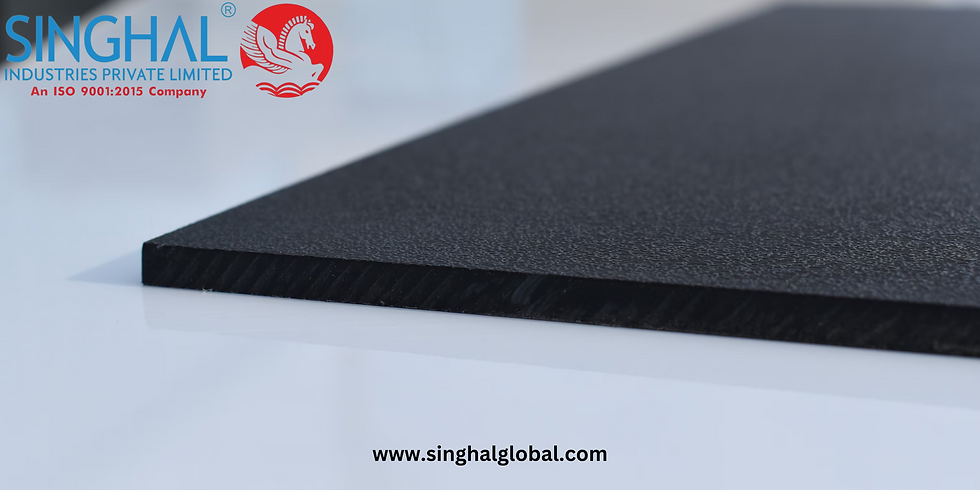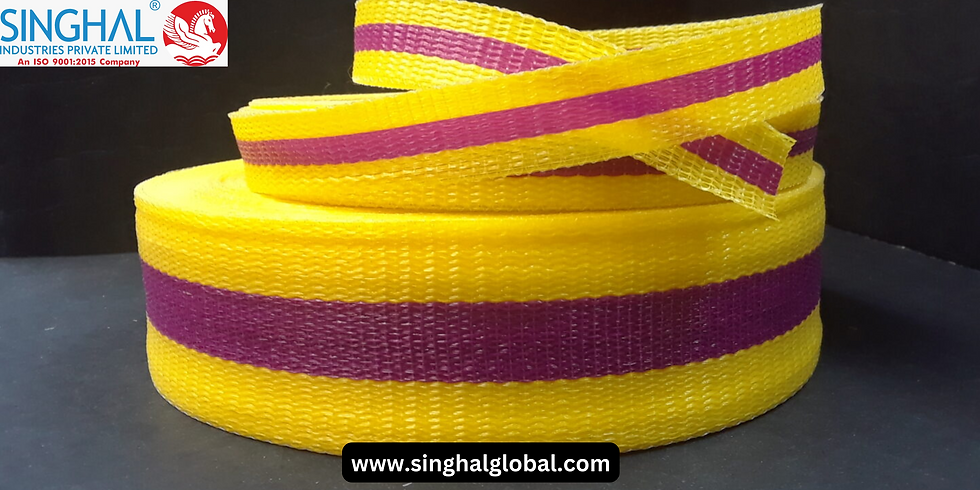HDPE Root Barrier: The Ultimate Solution for Protecting Your Landscape
- singhalglobal group

- Sep 13, 2023
- 3 min read
If you're a homeowner or landscaper, you're likely familiar with the challenges posed by invasive tree roots. These unwelcome guests can wreak havoc on your beautiful garden, causing damage to your hardscape, plumbing, and more. However, there's a solution that can help you maintain the integrity of your landscape: HDPE root barriers. In this comprehensive guide, we'll explore everything you need to know about HDPE root barriers, from their benefits to the installation process and frequently asked questions.
Introduction
Root intrusion is a common problem for anyone with trees or shrubs in their landscape. As plants grow, their roots can extend far beyond their canopies, often causing damage to nearby structures. This is where HDPE (High-Density Polyethylene) root barriers come into play. These innovative solutions act as a shield, preventing invasive roots from encroaching where they shouldn't. Let's delve into the world of HDPE root barriers and how they can transform your outdoor space.
What Is HDPE Root Barrier?
HDPE root barriers are durable, impermeable membranes designed to deter the growth of roots into specific areas, such as under sidewalks, driveways, and foundations. Made from high-density polyethylene, these barriers are incredibly sturdy and resistant to damage from both roots and environmental factors.
The Benefits of HDPE Root Barriers
HDPE root barriers offer a plethora of advantages for homeowners and landscapers:
1. Root Protection
HDPE root barriers effectively block root growth, preventing damage to underground utilities and hardscape elements.
2. Durability
These barriers are designed to withstand the test of time, ensuring long-lasting root protection.
3. Easy Installation
Installing HDPE root barriers is a straightforward process, even for those with minimal landscaping experience.
4. Environmental Friendliness
HDPE is an environmentally friendly material that does not leach harmful chemicals into the soil.
5. Cost-Effective
By preventing costly repairs to your property, HDPE root barriers can save you money in the long run.
Using HDPE Root Barriers
Now that you understand the benefits, let's explore how to use HDPE root barriers effectively:
1. Identify Problem Areas
Determine where root intrusion is a potential issue. Common problem areas include near foundations, sidewalks, and sewer lines.
2. Measure and Cut
Measure the length of the area you want to protect and cut the HDPE root barrier accordingly.
3. Dig a Trench
Dig a trench along the area where you'll install the barrier. Ensure it's deep enough to accommodate the barrier's depth.
4. Install the Barrier
Place the HDPE root barrier in the trench, ensuring that it stands vertically. Backfill the trench with soil and compact it.
5. Landscape as Usual
Continue with your landscaping activities, knowing that your plants' roots won't cause any damage.
HDPE Root Barrier: Frequently Asked Questions
Let's address some common queries regarding HDPE root barriers:
Q: How deep should I install an HDPE root barrier?
A: The depth of installation depends on the type of plant and the specific situation. In general, it's recommended to place the barrier at a depth of 18 to 24 inches.
Q: Can I install an HDPE root barrier myself?
A: Yes, HDPE root barriers are DIY-friendly. With the right tools and instructions, you can install them without professional help.
Q: Are HDPE root barriers environmentally safe?
A: Yes, HDPE root barriers are made from a safe, non-toxic material that won't harm your plants or the environment.
Q: Do HDPE root barriers require maintenance?
A: Once installed, HDPE root barriers are virtually maintenance-free, providing long-lasting protection.
Q: Can I plant near an HDPE root barrier?
A: Yes, you can plant above an HDPE root barrier without worrying about root damage to your structures.
Q: Where can I purchase HDPE root barriers?
A: You can find HDPE root barriers at your local landscaping supply store or order them online from reputable suppliers.
Conclusion
Incorporating HDPE root barriers into your landscaping efforts can be a game-changer. By preventing invasive root damage, you'll ensure the longevity of your outdoor space and save on costly repairs. So, take action today and enjoy a beautiful, hassle-free landscape for years to come.



Comments